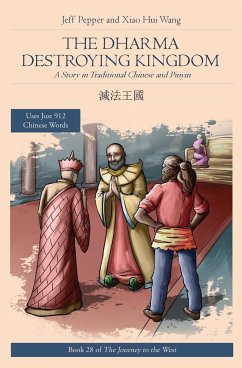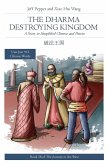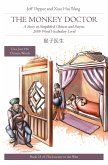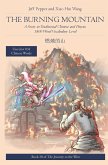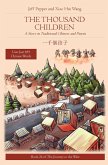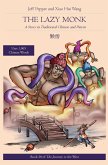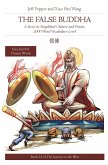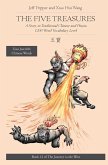Ignoring a warning from the Bodhisattva Guanyin, Tangseng and his three disciples enter a city whose king has vowed to kill 10,000 Buddhist monks and has already finished off 9,996. The travelers must avoid being killed and figure out how to show the king the error of his ways. Later, the Monkey King Sun Wukong flies over a mountain and sees a large demon with 30 little demons, all blowing fog from their mouths. This leads to a great battle where the demons use the "Dividing the Petals of the Plum Flower" trick to confuse the disciples and kidnap Tangseng. This is the 28th book in the best-selling Journey to the West series of stories for students learning to read Traditional Chinese. It is based on the events in Chapters 84 through 86 of the epic 16th century novel of the same name by Wu Chen'en. That novel was inspired by an actual journey by the Buddhist monk Tangseng, who traveled from Chang'an westward to India in 629 A.D. and returned seventeen years later with priceless knowledge and spiritual texts. Over the course of the book the four travelers face the 81 tribulations that Tangseng had to endure to attain Buddhahood. Books 1 through 28 in the Journey to the West series have used a total of about 2,000 different Chinese words, but only 912 words are used in this book. We introduce 29 new words for the first time in this book, and each one is defined on the page where it is first used. The book uses Traditional Chinese characters and includes pinyin, an English translation, and a full glossary. A free audiobook is available on YouTube's Imagin8 Press channel and on www.imagin8press.com.
Bitte wählen Sie Ihr Anliegen aus.
Rechnungen
Retourenschein anfordern
Bestellstatus
Storno

